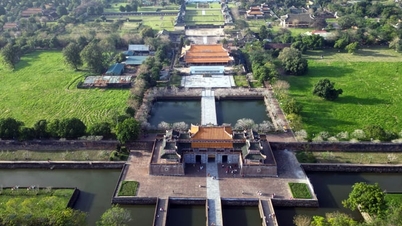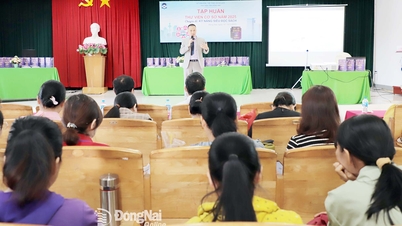At the recent International Scientific Conference with the theme "Journalism - Media in the context of Artificial Intelligence (AI) development", Dr. Nguyen Thi Tuyet Minh, Institute of Journalism - Media, Academy of Journalism and Communication announced a survey of 240 journalists showing that: 96.3% have used AI at various levels. Accordingly, 12.9% experiment, 22.5% infrequently, 28.8% when needed and 31.3% regularly. The group under 2 years has the highest rate of regular use (39.2%), the group over 10 years uses selectively (31.7% when needed), the group 3 - 10 years tends to experiment (17.7%). The above statistics reflect the adaptation of AI depending on experience.

Chart analyzing the use of AI by journalists
The survey found that AI is most commonly used for data analysis (30%), headline suggestions (25%), and content summarization (26.7%). The level of use of these applications varies by seniority. Accordingly, the group under 2 years prefers headline suggestions, the group 3-10 years prioritizes data analysis, and the group over 10 years uses AI more evenly.
The high rate of AI use in journalism reflects a global trend, with 75-85% of news organizations experimenting with it and 81.7% of journalists using it regularly. However, AI integration is uneven due to barriers in access to technology, policy and training.
Perceptions of AI’s impact on journalistic creativity are mixed. About 27.5% see AI as significantly improving performance, while 30.8% see it as only helping a small amount. However, 15% are concerned about dependency and 10.8% are concerned about AI reducing inspiration. Those with less than 10 years of experience have a more positive view than those with more than 10 years, who are more concerned about dependency and loss of individuality.
The survey found that journalists are still cautious about AI content. Accordingly, the majority (59.6%) said that it needs to be carefully verified, while only a small percentage completely (1.7%) or relatively (11.3%) trust it.
Length of service influences trust. Those with more than 10 years of service are cautious but have the highest rate of absolute trust, while those with less than 2 years are more concerned. Trust is low due to concerns about accuracy, lack of verification, and depth of content. As the public struggles to differentiate between AI content, journalists’ responsibility for verification increases, requiring appropriate policies and training.
The survey shows limitations in AI training in journalism. Accordingly, only 11.7% have received formal training, 40.8% are self-taught informally (highest), 11.7% are self-taught systemically, 10.8% know through colleagues, 9.2% have not accessed. The group over 10 years has the highest rate of formal training (24.4%), the group under 2 years mainly self-taught informally (38%) or have not accessed (20.3%). This difference reflects the digital capacity gap between generations, affecting the effectiveness of AI application.
The study proposes recommendations for integrating AI into journalism responsibly and effectively. Accordingly, training institutions and newsrooms should consider implementing in-depth AI programs, including: Basic knowledge (algorithms, deep learning, advantages and disadvantages of AI); Practical skills (using AI for transcription, translation, data analysis, generative AI); Critical thinking and AI information verification (recognizing "illusions", checking for accuracy, detecting bias); Handling ethical issues related to AI; Integrating AI into journalism curricula, integrating it into journalism training modules (information gathering, writing, editing, professional ethics)...
Source: https://baobinhphuoc.com.vn/news/9/174015/people-who-make-reporters-use-artificial-intelligence-the-most-for-data-analysis



![[Photo] Deep sea sand deposits, ancient wooden ship An Bang faces the risk of being buried again](https://vphoto.vietnam.vn/thumb/1200x675/vietnam/resource/IMAGE/2025/11/13/1763033175715_ndo_br_thuyen-1-jpg.webp)
![[Photo] Unique art of painting Tuong masks](https://vphoto.vietnam.vn/thumb/1200x675/vietnam/resource/IMAGE/2025/11/14/1763094089301_ndo_br_1-jpg.webp)
![[Photo] Special class in Tra Linh](https://vphoto.vietnam.vn/thumb/1200x675/vietnam/resource/IMAGE/2025/11/14/1763078485441_ndo_br_lop-hoc-7-jpg.webp)


























































































![Dong Nai OCOP transition: [Article 3] Linking tourism with OCOP product consumption](https://vphoto.vietnam.vn/thumb/402x226/vietnam/resource/IMAGE/2025/11/10/1762739199309_1324-2740-7_n-162543_981.jpeg)






Comment (0)